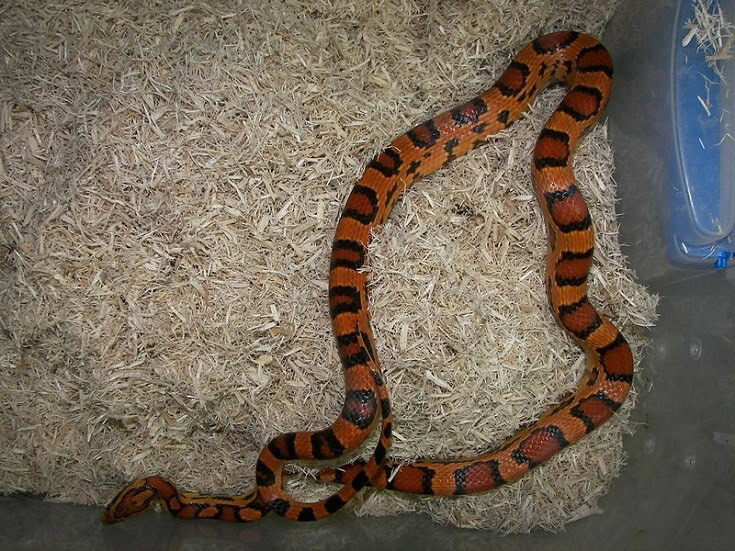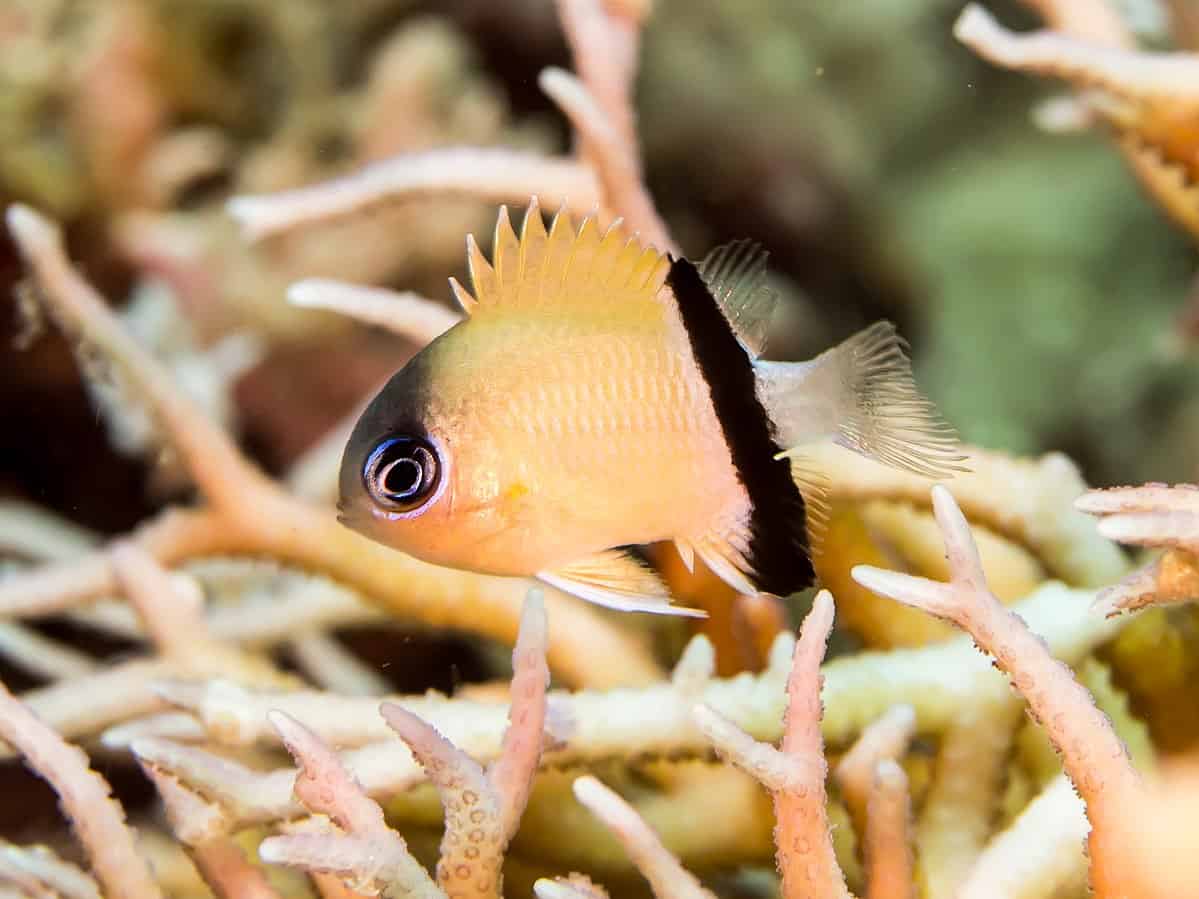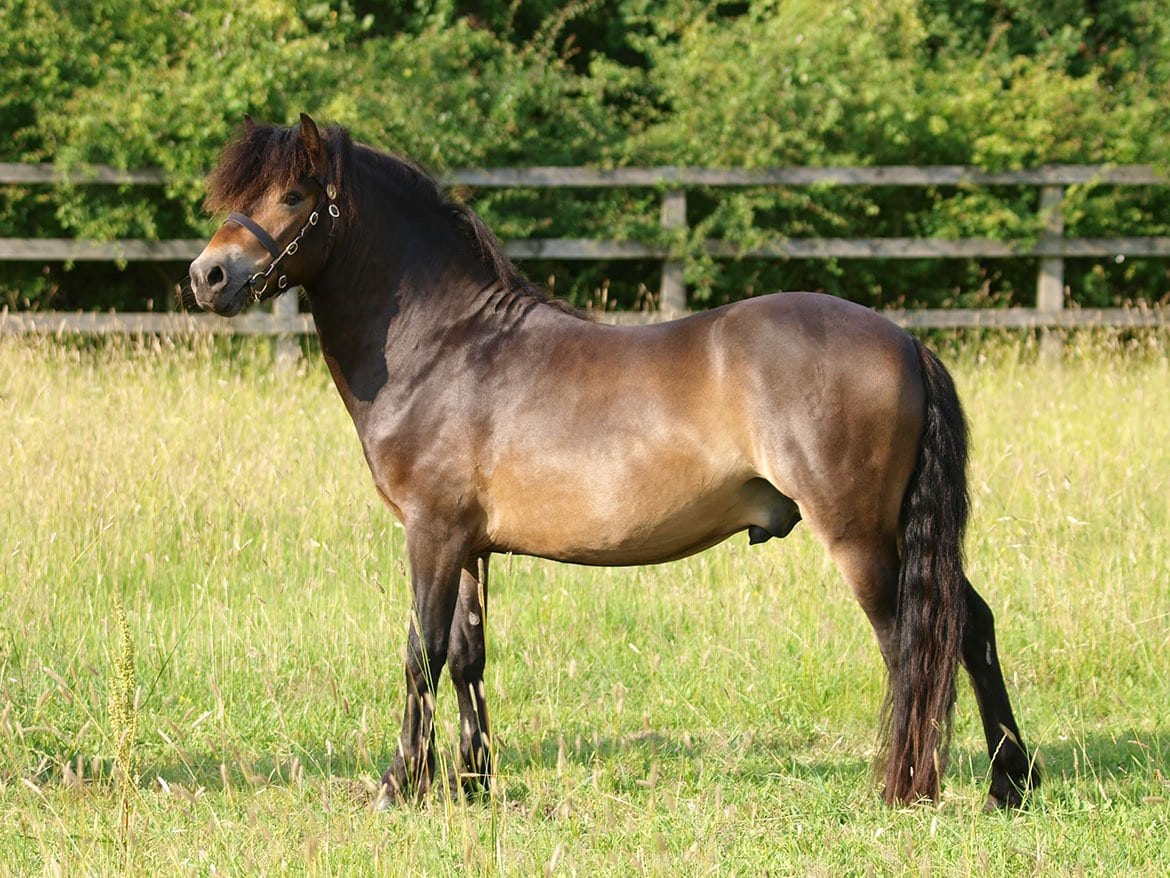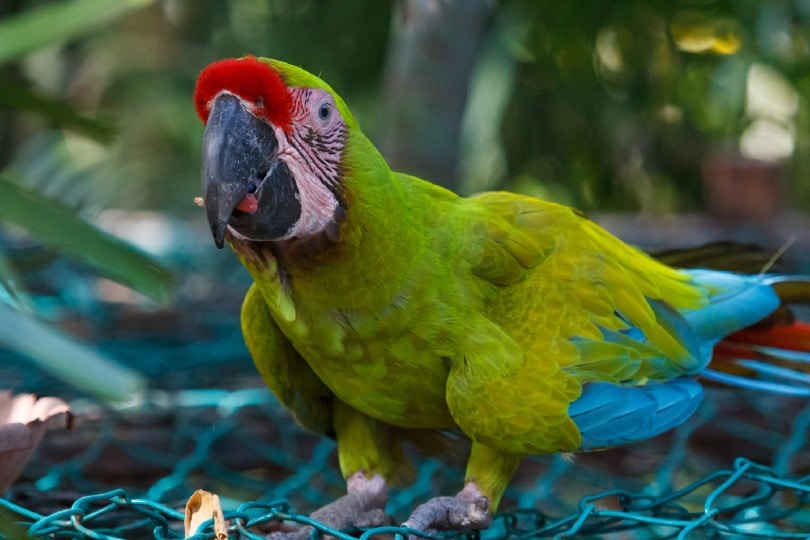Click to Skip Ahead
The Okeetee is a Corn Snake with a unique pattern and color, referred to as a morph. The Corn Snake has over 800 different morphs, and the Okeetee is one of the more popular ones. It is believed that Corn Snakes get their name from the markings on their bellies, which somewhat resemble maize or corn, but some think it might also be because they hunt rodents around cornfields and storage facilities.
Corn Snakes are tremendously popular pet snakes and are indigenous to the U.S. The Okeetee was initially found in the wild in South Carolina, and collectors have been breeding them in captivity ever since. If you’re interested in learning more about this beautiful snake, we have much more information about the Okeetee and how to care for it.

Quick Facts About the Okeetee Corn Snake
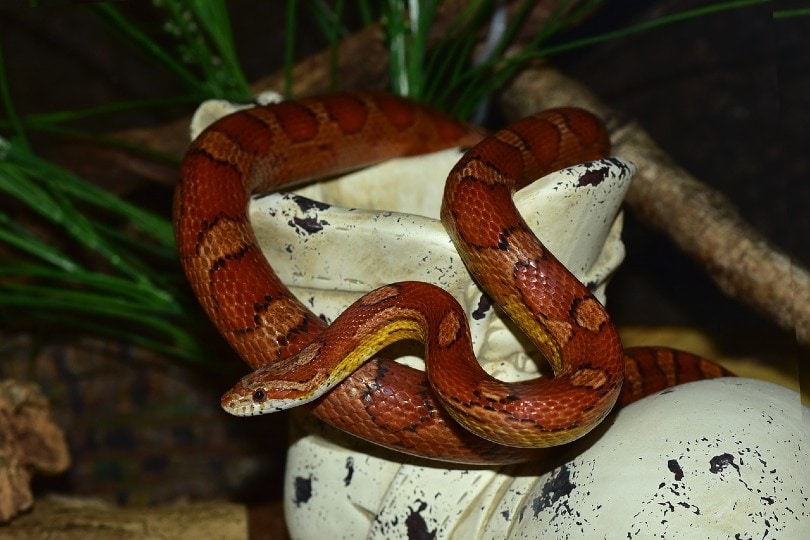
| Species Name: | Elaphe guttata |
| Family: | Colubridae |
| Care Level: | Easy |
| Color Form: | Orange with dark red markings with black borders |
| Lifespan: | Up to 20+ |
| Adult Size: | 2 to 6 feet |
| Diet: | Frozen but thawed mice |
| Minimum Tank Size: | 40+ gallons |
| Temperature & Humidity: | 78º–82° F with 75° F cool zone and 90° F basking area |
Do Okeetee Corn Snakes Make Good Pets?
Okeetee Corn Snakes make great pets, not only for experienced snake owners but also for beginners. They are pretty docile but are hardy and love to explore. They are also relatively easy to take care of, and their eye-catching color makes them a fun and beautiful addition to your household.
Appearance
Here’s where the Okeetee Corn Snake truly shines! They are typically orange with dark red saddle markings, outlined with black borders. There are different bloodlines of the Okeetee where breeders have encouraged variations in their appearance.
The Abbotts Okeetee can be scaleless with more of a brownish hue, and the Tessera morph has stripes rather than saddle markings. Okeetees are pretty much the same as regular Corn Snakes in every other way other than in the coloring. They range in size as small as 2 feet or as large as 6 feet but tend to average about 3 to 5 feet. A 5-foot Okeetee can weigh about 1 to 2 pounds.

How to Take Care of an Okeetee Corn Snake?
Habitat, Tank Conditions & Setup
Tank
The size of the enclosure does depend on the size of your snake. Opt for a tank that is, at a minimum, as long as your snake is long and about half of your snake’s length for the width and height. This, of course, means you’ll need to invest in new enclosures if your snake is still growing.
Be sure to keep a heavy and shallow bowl of fresh water in the vivarium and provide your Okeetee with at least two hiding places. You’ll need to do a quick cleaning daily and a deep cleaning about once a month.
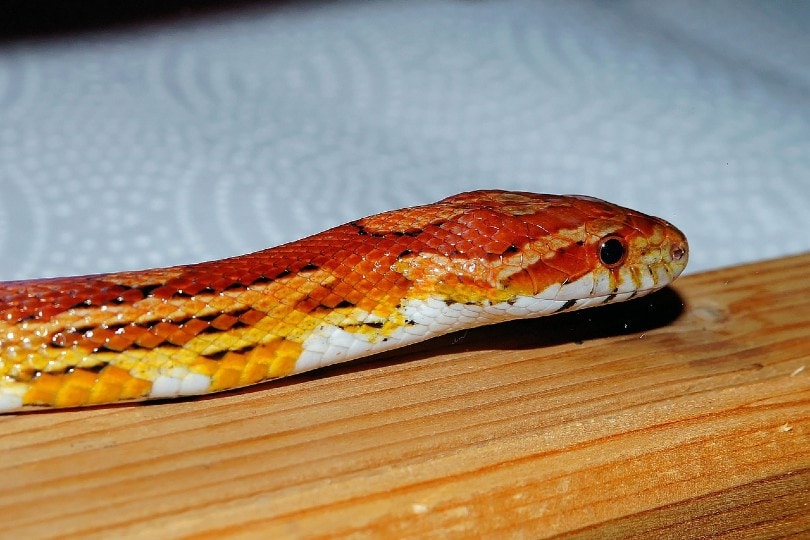
Lighting
The lighting should mimic the natural day and night cycle, and the lights should be on for about 12 hours a day. It’s best to follow the natural light cycles of the seasons.
Heating (Temperature & Humidity)
The enclosure should have three temperature zones: the general temperature should be 78º–82° F, the cool area should be about 75° F, and the warm/basking area should be 90° F.
Humidity is best at 65%–75%, which can be accomplished with the proper substrate and misting the vivarium daily.
Substrate
Some of the best substrates are aspen shavings and cypress mulch. You need it to maintain the right humidity and allow the snake to burrow.
| Tank Recommendations | |
| Tank Type: | 40-gallon vivarium |
| Lighting: | Mimics natural day/night cycle |
| Heating: | Heating pad/tape on the bottom of the enclosure |
| Best Substrate: | Aspen bedding |

Feeding Your Okeetee Corn Snake
Okeetee juveniles should be fed about once every 7 to 10 days and an adult every 10 to 14 days. They should be fed a rodent that has been humanely euthanized and frozen (which you can order online) and then thawed. Typically, mice are a staple food for the Corn Snake, but rats are highly nutritious and should be fed every 14 to 21 days for an adult snake.
| Diet Summary | |
| Fruits | 0% of diet |
| Insects | 0% of diet |
| Meat | 100% of diet – small/medium-sized rodents |
| Supplements Required | Vitamin D, in some cases |
Keeping Your Okeetee Corn Snake Healthy
Common Health Issues
Okeetee Corn Snakes are generally very healthy, but here are some signs to keep watch for:
- Diarrhea or vomiting: There could be an issue with parasites or a gastrointestinal problem.
- Bubbles or discharge from nose or mouth: This could indicate a respiratory infection.
- Resting with an open mouth or restlessness: Your snake might be overheated.
- Rubbing behavior or prolonged soaking: If your snake is spending much longer than usual in its water bowl, there could be a problem with mites, which are tricky to eradicate.
If you notice your Okeetee behaving unusually or you observe any unusual sores or blisters on its skin, take your snake to a reptile veterinarian.
Lifespan
If you take good care of your Okeetee, it should live for at least 15 years, but maybe as long as 25! Routinely weigh your snake so you can keep track of its health, and as long as you take good care of your snake’s enclosure and feed it properly, you’ll have a very long-lived pet.
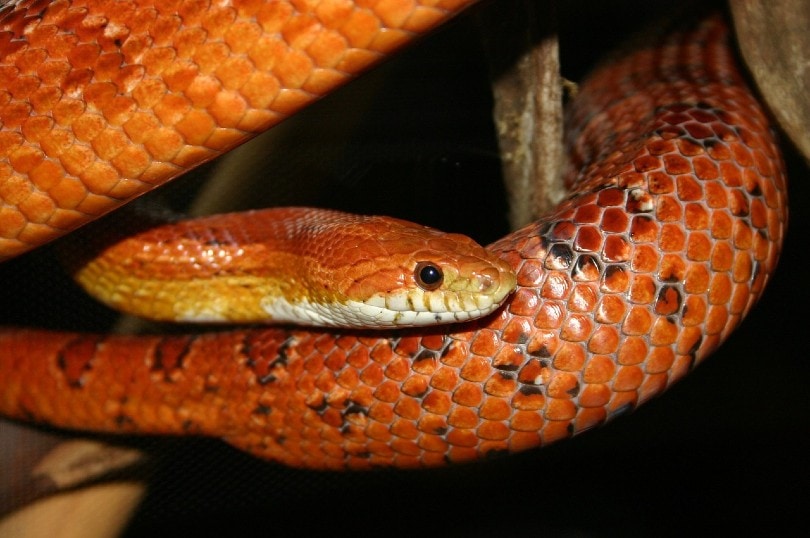
Breeding
In order to breed for Okeetee hatchlings, at least one of the parents needs to have a dominant gene. Or both parents need to have recessive genes for you to have an Okeetee offspring.
If you’re looking to breed rare Okeetee morphs, you’ll have better results if both parents are also Okeetee. You’ll end up with a hybrid if you breed a pure Okeetee with another Corn Snake. And keep in mind that you’ll need to keep the snakes apart until breeding.

Are Okeetee Corn Snakes Friendly? Our Handling Advice
Okeetee Corn Snakes are quiet and docile, and as far as snakes go, they can be pretty friendly. Corn snakes are considered one of the best pets and the most well-adapted to captivity.
Handling the Okeetee should occur about once or twice a week at a minimum but no more than once daily. Gently touch your snake with something other than your hand, and when its tongue flicks, it’s awake.
Always approach your snake from the side and be sure to support its full body weight and never hold it by the tail. Then, you can allow your Okeetee to wind its way around your neck and body.
Shedding & Brumation: What to Expect
Adult Okeetees shed about every 3 months. Just ensure you’ve kept your snake well hydrated and the humidity levels in the enclosure are correct. If the skin becomes stuck in places, give your snake a warm bath and double-check that the eye caps and tail have properly shed. And never pull on the shedding skin unless it’s been soaked first.
You don’t need to brumate your Okeetee unless you plan on breeding it. Hibernation for snakes in captivity isn’t as necessary as it is for the snakes in the wild. If you decide to brumate your snake, the temperature will need to be gradually lowered, and you shouldn’t feed it for about 2 to 3 weeks.
Hibernation typically lasts 6 to 8 weeks, so you won’t feed your Okeetee during this time, and then over one or two days, you’ll gradually bring up the temperature.


How Much Do Okeetee Corn Snakes Cost?
Okeetee Corn Snakes can range from $80 to $1,250, depending on the bloodline, color, and pattern. The more rare the snake and eye-catching the colors and patterns, the more you can expect to pay.
Care Guide Summary
- Docile nature
- Tolerate handling for long periods
- Great for experts and beginners
- Sleeps during the day
- Habitat must be closely monitored
- Eats thawed mice

Final Thoughts
If you’re interested in a pet that doesn’t require a lot of your time but will be with you for many years, you can’t go wrong with the Okeetee Corn Snake. The snake is easy to take care of and will enjoy hanging out around your neck from time to time. Make sure you study up on this Corn Snake before you invest in one, but you’ll have a beautiful and captivating pet for a long time.
You may also want to read:
Featured Image Credit: Jasper Young, Pixabay
